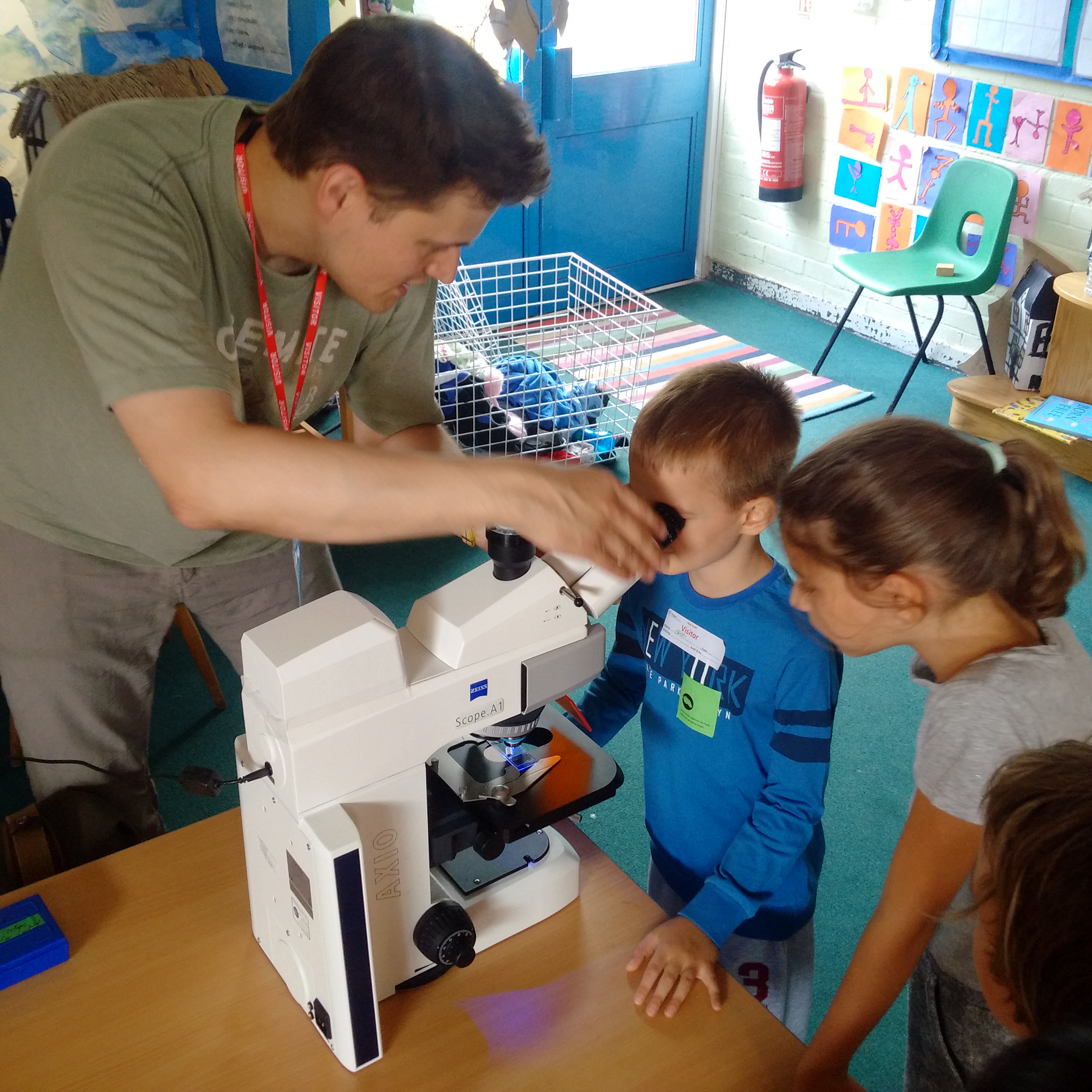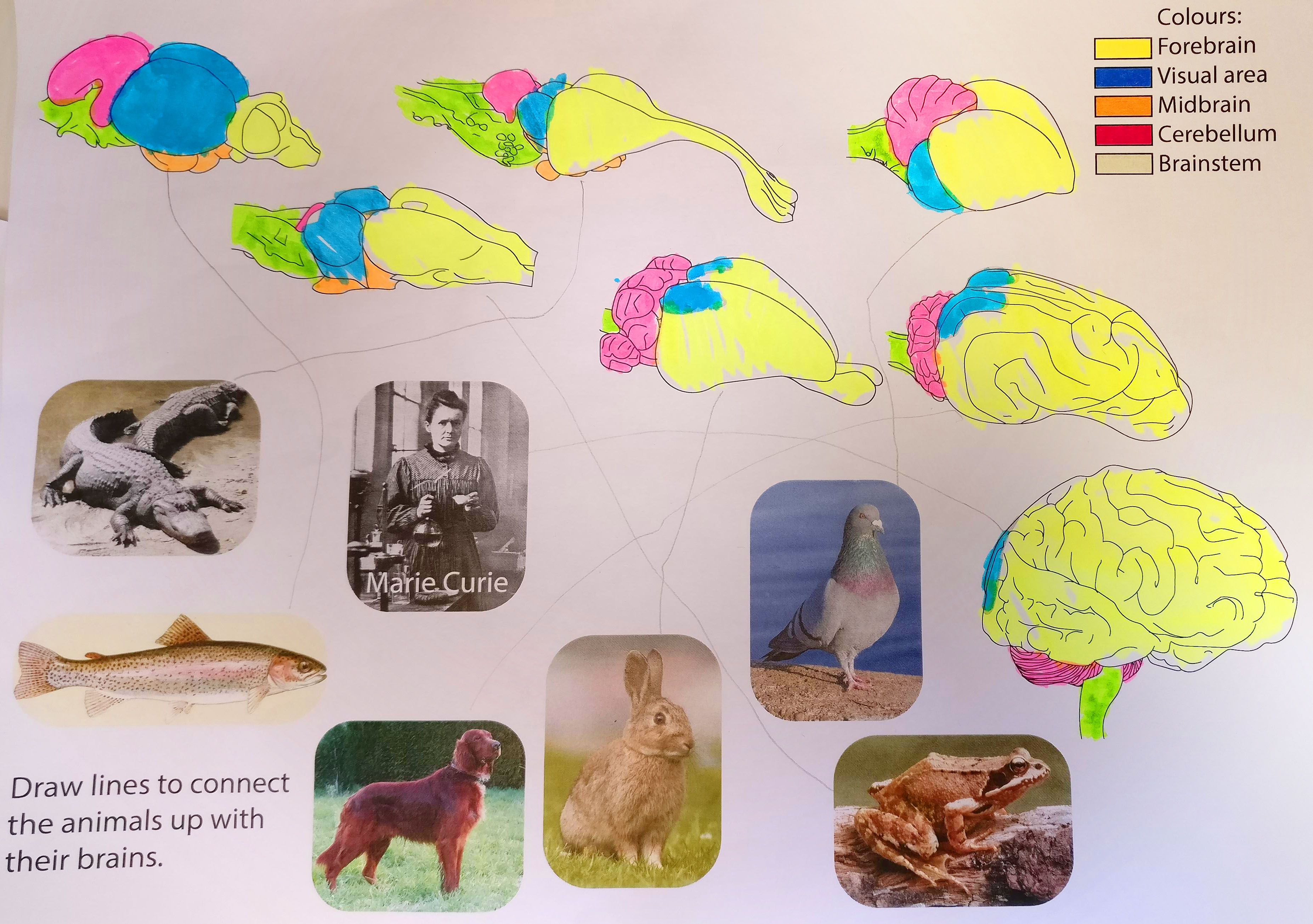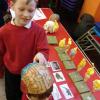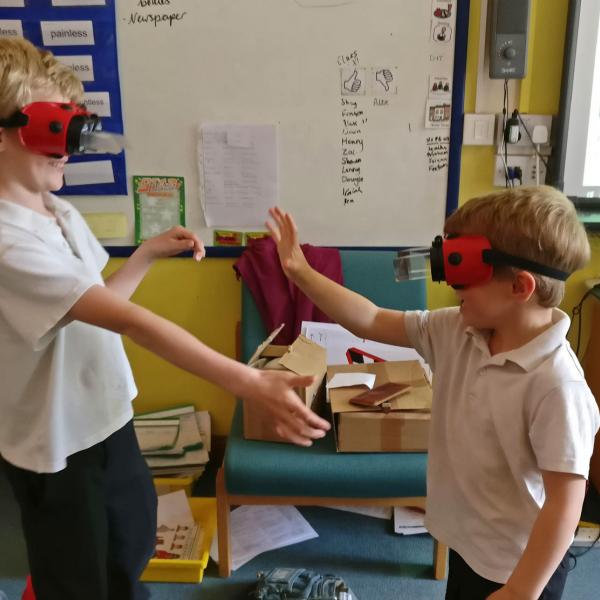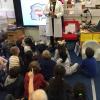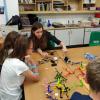Ben runs two Science Club sessions at local primary school
Ben runs two Science Club sessions at local primary school
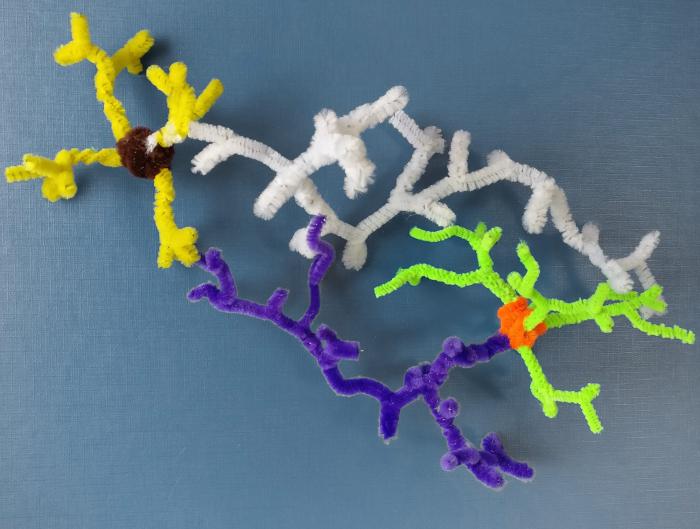
In May and June 2018, Unit Research Support Manager Ben Micklem visited St. Nicholas's Primary School in Oxford to run two hour-long afterschool Science Club sessions for children in Years 3 and 4 (7-9 years old) .
The first session focussed on memory, and a comparison between human memory and storage of data on a computer's hard disk. The children made their own brain cells from pipe cleaners, and learned about the 'listening arms' and 'sending arms' of nerve cells (that is, the dendrites and axons of neurons). They were also introduced to the idea that human memory is stored in the strengths of the connections between networks of brain cells, and the timing of those cells 'talking' is very important. Learning that the human brain contains billions of cells was another clear highlight for the children.
Each child then contrasted the brain's method of storing information with a computer hard drive. They were each given a hard drive, which they opened themselves with Torx screwdrivers, to examine the platters and the read/write heads. They learned about the tracks of data around the disk, and the change in magnetic charge on the surface being created or read by the head to store binary data. Numbers again impressed them, with around 96 trillion patches of magnetic polarity, each one storing a 'bit', giving the largest hard drive 12 terabytes of storage.
The second session covered the variation in brain shape and size across different species of vertebrates, and how the areas of the brain were enlarged and specialised depending on the animals' behaviours and ecological niches. The children watched videos of some of the animals, then learned about the roles of different areas of the brain, and observed how they were different or conserved in fish, reptiles, amphibians, birds, rodents, dogs and humans by examining the brain models that Ben brought in. The children then completed some fun worksheets with colour-coded regions of the brains to take home.
